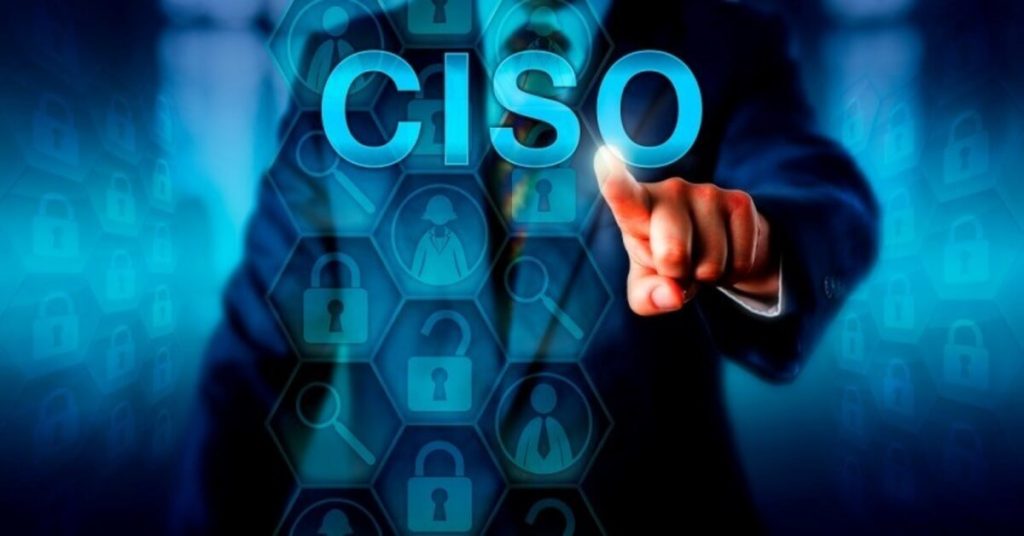In today’s ever-evolving cybersecurity landscape, data and information security must be at the forefront of any organization’s strategic thinking to remain ahead of the curve.
The role of a Chief Information Security Officer (CISO) is essential in creating robust security plans and mitigating cyber threats.
However, not all organizations can afford to hire an in-house full-time CISO, particularly those with tight budgets or changing security priorities. That’s where the concept of a virtual CISO, or vCISO, comes in.
Digital security is a vibrant field and both vCISOs and classical CISOs play essential roles in helping firms confront cyber threats. Now let us analyze their differences: virtual CISO vs traditional CISO.
Virtual CISO vs Traditional CISO :

So, guys here are the differences between Virtual CISO vs Traditional CISO roles:
About Virtual CISO (vCISO)
In the realm of cybersecurity, a Virtual Chief Information Security Officer (vCISO) who may be referred to as a CISO-as-a-service is an outsourcing information officer. What you need to know about vCISOs:
Role and Responsibilities:
Security programs are planned, managed, implemented, maintained, developed and communicated by a vCISO. They provide expertise on an ongoing basis, usually part-time and remotely.
vCISOs can either be contracted independently or through managed security service providers (MSSPs)
About Traditional CISO
A CISO is a top-level manager within an organization tasked with creating and maintaining the vision, strategy, and program of the company to ensure that information assets and technologies are well-secured.
For instance:
1. Leading Cybersecurity:
Management of Information security program, protecting assets, applications, systems and Technology. Risk Management: Developing and implementing processes across the enterprise to minimize IT risks.
2. Incident Response:
Action on security incidents without wasting time. Standards and Controls: Establishment of right standards and controls. Policy and Procedure Management: Leading in the development of policies as well as procedures.
3. Cybersecurity Leadership:
Traditional CISOs are stable, internal leaders who are deeply ingrained in the corporate culture and daily operations.
However, vCISO offers offsite security services which enable them to play a broader role than their counterparts do within the confines of an organization.
4. Outsourcing Cybersecurity vs. In-house Expertise:
Outsourced CISO services are more flexible and provide access to a larger pool of expertise without having to incur permanent staff costs.
The downside is that regular CISOs result in higher costs since they contribute heavily to organizational knowledge as well as resource allocation conflicts.
5. Strategic Cyber Defense:
Through exposure to different industries, vCISOs can come up with creative security strategies that may not be readily seen from inside an organization.
They probably are best at understanding specific organizational risks but would then have a narrower view of industry-wide best practices compared to their traditional colleagues
6. Cost-Effective Cybersecurity:
The vCISO model has been designed such that it offers value-for-money cybersecurity solutions.
This implies that organizations can bring in high-end expertise when required and remove this resource when it is not needed thus optimizing cybersecurity expenses without making long-term financial commitments for senior executives.
7. Flexible Security Solutions vs. Static Approaches:
The agility of vCISO services allows for the rapid adjustment of security strategies to meet emerging threats, flexibility less inherent in the traditional, full-time CISO framework.
8. Organizational Cyber Resilience:
Both vCISOs and traditional CISOs aim to enhance organizational cyber resilience.
vCISOs leverage remote CISO services and virtual security measures to extend resilience beyond physical office spaces, crucial in today’s increasingly remote and digital workplace environments.
9. Security Governance and Decision-Making:
Traditional CISOs may have an advantage in direct, day-to-day security governance and quicker decision-making due to their physical presence.
However, vCISOs compensate with streamlined remote cybersecurity management protocols and swift, informed cybersecurity decision-making based on a wealth of cross-industry experiences.
READ MORE: The Role of Governance Risk and Compliance in Ensuring Cybersecurity
Advantages of a Virtual CISO (vCISO)
- Cost-Effective: Hiring a full-time CISO can be expensive, especially for small and medium-sized businesses. A vCISO allows you to access top-tier expertise for a fraction of the cost, often with a flexible fee structure based on your specific needs.
- Access to Expertise: vCISOs work with multiple clients, giving them a broad range of experience across various industries. They can bring free
- Larger Applicant Pool: With the virtual model, you have access to a bigger variety of eligible applicants. The geographical restrictions are removed so that you can hire based on cultural fit and security requirements.
- Training and Development: The vCISO may be an asset when it comes to training your internal security team. Such experts can help bridge any knowledge deficit there is and keep your team apprised of current threats as well as best practices.
Conclusion
Organizations must assess their security leadership requirements in this dynamic world of cybersecurity today. Traditional CISOs are stable and well-known while VCs bring adaptable, cost-effective and new perspectives. Deciding between conventional and virtual CISOs will depend on the specific context and strategic vision of an organization.
Bear in mind that strong cyber security leadership is vital whether you choose a traditional or a virtual one to ensure your digital assets are protected and you remain resilient against evolving threats.
FAQ’s: Virtual CISO vs Traditional CISO
1. What qualifications should a vCISO possess?
Ans. A vCISO should have extensive cybersecurity experience, industry certifications, and a strategic mindset.
2. How do vCISOs handle incident response?
Ans. vCISOs collaborate with incident response teams, ensuring timely and effective mitigation.
3. Can vCISOs adapt to different organizational cultures?
Ans. Yes, vCISOs bring adaptability and cultural awareness to their roles.
4. What are the cost savings associated with vCISOs?
Ans. vCISOs offer cost savings by avoiding full-time executive salaries and benefits.
5. How do vCISOs stay updated on emerging threats?
Ans. Continuous learning, industry networks, and threat intelligence keep vCISOs informed.
6. What role does communication play for vCISOs?
Ans. Effective communication is critical for vCISOs to align security goals with business objectives.
7. Can vCISOs handle compliance requirements?
Ans. Yes, vCISOs ensure compliance by leveraging their expertise and industry standards.
8. Do vCISOs work with existing security teams?
Ans. Absolutely, vCISOs collaborate with internal teams to strengthen overall security posture.
9. How do organizations choose between vCISOs and traditional CISOs?
Ans. Consider factors like budget, organizational size, and strategic goals.
10. What is the future outlook for vCISO roles?
Ans. As remote work and digital transformation continue, vCISOs will play an increasingly vital role.












